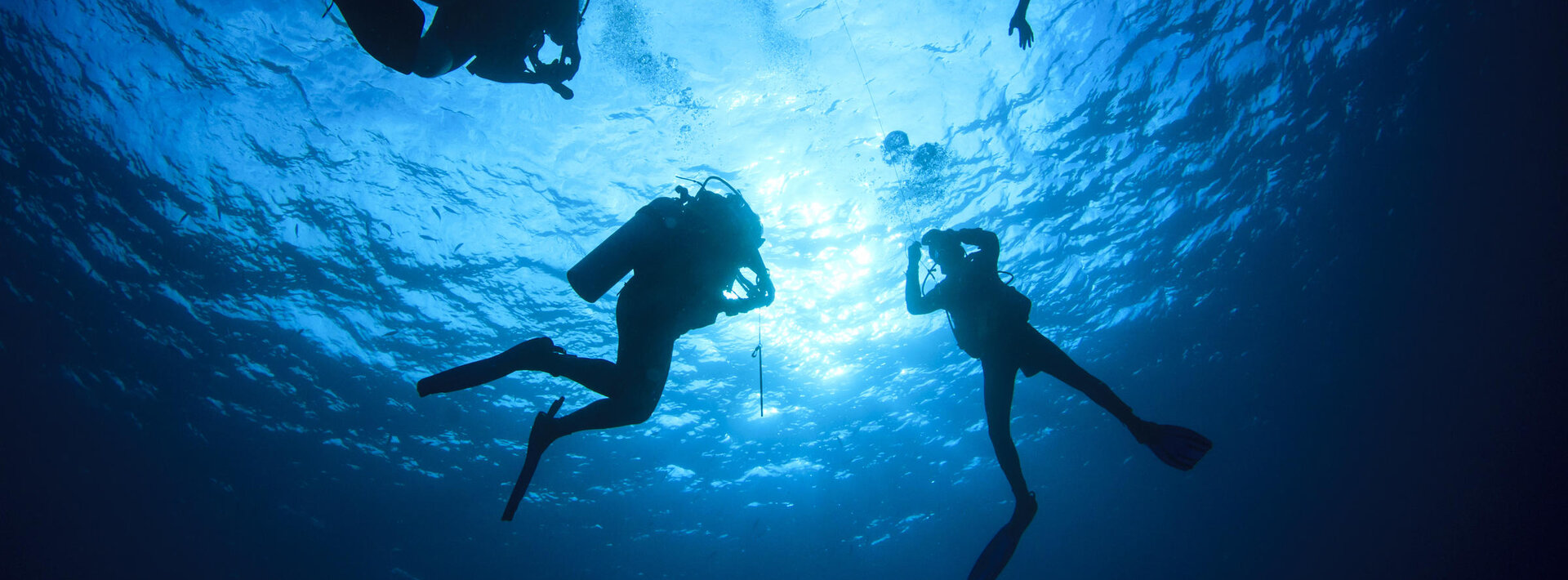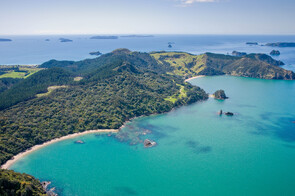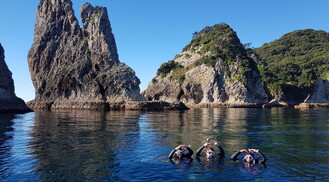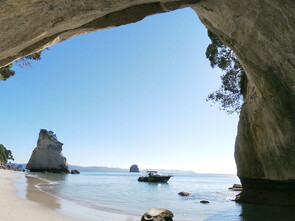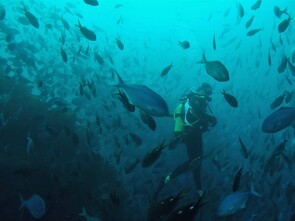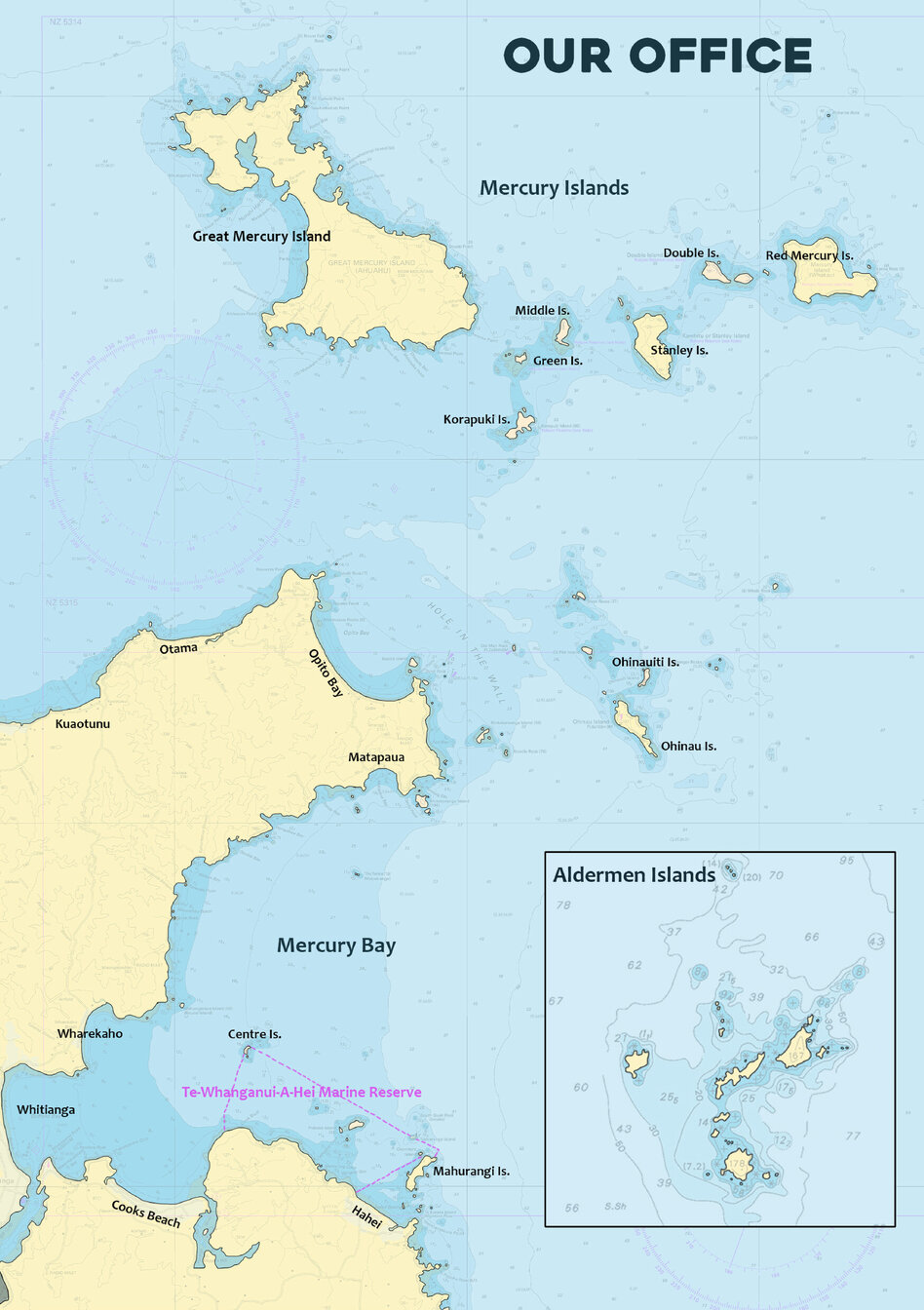Location, Location, Location
No matter how you get to the Coromandel Peninsula's East Coast, by the time you arrive you would have already witnessed some of the area's stunning coastline and Islands. Beautiful white sand beaches alongside rugged volcanic cliffs, an array of offshore islands scattered amongst the vista, all clad in picturesque native bush which during the summer is laced with the unmistakable bright red flowers of the Pohutukawa tree. All roads leading to the temperate South Pacific Ocean - where adventure awaits.


Throughout the year there is great diving to be done, with the benefit of a sheltered harbour entrance and so many different dive sites offering protection from different weather directions, it is possible to find good diving on even the most uninviting of days.
Mercury bay is the ideal gateway to all that the Eastern Coromandel has to offer. Within an hour of scenic boat travel from the town of Whitianga, there are miles of diveable coastline to explore, over 30 islands, including the Mercury and Aldermen Island groups, Te Whanganui-a-Hei (Cathedral Cove) Marine Reserve, as well as countless rocks, pinnacles, and bays.
Dive sites are as varied as the scenery surrounding them. For the less experienced and those in training there are picturesque bays and shallow sandy bottoms leading along rocky reefs covered in Kelp forest which is home to countless species. Some of the more commonly encountered are the ever-curious Leatherjacket and the bold and colourful Sandagers Wrasse, Red Moki often in pairs.
The Black Angelfish can be seen tending to and guarding its own piece of rock, chasing away any fish that dares to come too close. Porcupine Fish are often spotted under rock ledges, as are Rock Lobster of both the Red and Packhorse variety. Butterfish families frequent the sunny shallow knolls and above the reef schools of Jack Mackerel roam. Hiding in the cracks you can often find a Yellow Moray eel that looks like its waiting for the punchline of a joke. Octopus homes can be spotted by the arrangement of shells laid around the entrance and a closer inspection will often result in a pair of eyes stretching out to spy you back.
Eagle rays frequent these areas and are always a highlight to see gliding gracefully around the reef or sleeping in a sheltered spot. Their slightly larger cousins, the Shorttail stingray are also a common sight, undulating its wings around the reef like a magic carpet. The Longtail stingray growing up to four metres long is a rarer treat but has been known to congregate in large groups in the area. If your dive happens to be in the Te Whanganui-a-Hei Marine Reserve, then chances are you'll meet a big group of very large Snapper or spy the large Crayfish boldly edging out of their hiding places to check out.
Dive sites are as varied as the scenery surrounding them. For the less experienced and those in training there are picturesque bays and shallow sandy bottoms leading along rocky reefs covered in Kelp forest which is home to countless species. Some of the more commonly encountered are the ever-curious Leatherjacket and the bold and colourful Sandagers Wrasse, Red Moki often in pairs.
The Black Angelfish can be seen tending to and guarding its own piece of rock, chasing away any fish that dares to come too close. Porcupine Fish are often spotted under rock ledges, as are Rock Lobster of both the Red and Packhorse variety. Butterfish families frequent the sunny shallow knolls and above the reef schools of Jack Mackerel roam. Hiding in the cracks you can often find a Yellow Moray eel that looks like its waiting for the punchline of a joke. Octopus homes can be spotted by the arrangement of shells laid around the entrance and a closer inspection will often result in a pair of eyes stretching out to spy you back.
Eagle rays frequent these areas and are always a highlight to see gliding gracefully around the reef or sleeping in a sheltered spot. Their slightly larger cousins, the Shorttail stingray are also a common sight, undulating its wings around the reef like a magic carpet. The Longtail stingray growing up to four metres long is a rarer treat but has been known to congregate in large groups in the area. If your dive happens to be in the Te Whanganui-a-Hei Marine Reserve, then chances are you'll meet a big group of very large Snapper or spy the large Crayfish boldly edging out of their hiding places to check out.
